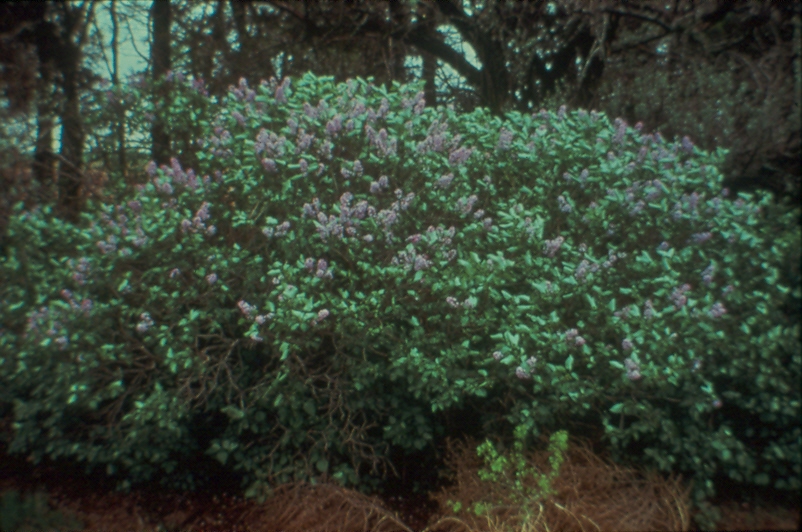Lilac
 Syringa vulgaris, or Lilac, is native to Southeast Europe and probably has been cultivated since the mid-1500's. It’s not native to Kansas.
Syringa vulgaris, or Lilac, is native to Southeast Europe and probably has been cultivated since the mid-1500's. It’s not native to Kansas.
Mature Size
In Kansas it grows to a height of 8 to 12 feet with a spread of 6 to 10 feet.
Growth Rate
Once established, it grows at about 12 to 18 inches per year with a slow to moderate growth rate.
Leaves, Stems and Fruit
Leaves are borne two at a location on opposite sides of the twig. They are gray-green to dark blue-green. Fruit is a dry capsule and not especially attractive. It is an attractive plant with large fragrant clusters of purple blossoms.
Use
Windbreaks - Lilac forms a good shrub row in windbreaks and in single row screens. Its low, dense growth provides good ground level wind protection. Blossoms add beauty to plantings.
Wildlife Habitat - Lilac is generally under-rated for use in wildlife habitat. Its suckers provide quality cover for numerous birds and animals. The fruit, however, has little benefit for wildlife.
Adaptation and Soil
Lilac has adapted statewide and is planted throughout Kansas on a wide range of soils. It tolerates both extreme dry and wet conditions reasonably well.
Spacing
Lilac is spaced 4 to 6 feet apart.
Culture
One-year-old, bare-root seedlings (10 to 14 inches tall) are used in conservation plantings. Lilac is very drought tolerant. It is very tough and long-lived. Sucker sprouts produced from roots allow the plant to slowly increase in diameter. During the establishment period, supplemental watering and control of competing vegetation will aid survival and early growth.
Pests
Lilac usually continues to function even if common pests, such as lilac borer, powdery mildew and oystershell scale are not controlled.
Soil Information
| Average Height in 20 Yrs: | |
| -Eastern | 8-10 ft. |
| -Central | 8-10 ft. |
| -Western | 6-8 ft. |
| Growth Rate: | Slow |
| Native Species: | Introduced to Kansas |
| Windbreak Value: | High |
| Wildlife Value: | Medium |
| Lumber Products: | No |
| Fuelwood Products: | No |
| Drought Tolerance: | High |
| Texture: | 1,2,3 |
| Soil Saturation: | No Tolerance |
| Salinity Tolerance: | Low Tolerance |
| pH Range: | 5.8-7.8 |